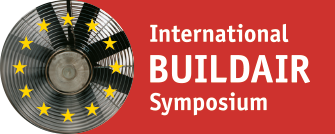We all know that the airtight or sufficiently air-impermeable (which is the physically correct term) building design is state-of-the-art, i.e., complies with the “Recognized and Generally Accepted Good Engineering Practices”. It is relatively easy to achieve a sufficiently air-impermeable design for new buildings when ensuring that it is carefully planned and executed and that the design is quality-controlled.
When modernizing existing buildings, the situation is often different. Here, parts of the airtight envelope have to be incorporated into the existing building during retrofitting. In some cases, certain components are not opened up entirely during the process, e.g., when renovating buildings from the outside where residents expect to stay in the building with minimum hassle. If clients want to retain existing airtightness layers, it is often difficult to assess the workmanship. The surface of the “old” airtight barrier has to be used for bonding even though it is often not suited for such a purpose and has to be primed prior to bonding. During partial renovations only the affected part of the building is upgraded and sealed airtight, and not the entire building. These and several other aspects are major challenges for all parties involved while retrofitting an existing building with an airtight layer.
For the reasons cited above, it should be mandatory to conduct a careful survey of the building before starting the renovation. Especially surfaces and butt joints of existing superstructures should be inspected to ensure that they are fit for subsequent joining and bonding. The air seal to be installed should be identified in the building’s sectional view and the building volume to be heated after completion should also be taken into account.
Then, careful planning should start during which an airtight layer is defined for each component. When retrofitting the air barrier from the outside, building physics and the design of the building have to be considered as well.
If the attic hasn’t been converted so far, the question arises as to whether the attic will be part of the heated / airtight building volume, or not. Depending on this decision and the method applied (retrofitting from the inside or outside), contractors have to consider certain aspects during execution and while sealing the joints.
When dealing with exterior brick walls, it should be noted that the interior plastering usually provides for the required airtightness. Accordingly, all components affected have to be plastered across the entire surface. More often than not, however, this is not the case behind pre-wall installations, sill walls or in the garret, which is why these areas often require rework.
Many airtight seals are achieved by bonding the surfaces. The substrate has to meet certain requirements which is often not the case in existing buildings. Cleaning the surfaces is thus a must and should be made obligatory before starting with bonding. In some cases, layers, e.g., masonry or plaster, have to be added to some components. Light superficial dust can be removed by using an adhesive primer. Unstable, crumbling surfaces are not fit for bonding.
When dealing with joints with complicated or difficult surface geometries a liquid sealant can be applied instead of “classic” adhesives. These sealants adhere to most conventional materials and you can spray or apply them easily and quickly - thus saving quite some time.
Last but not least, quality assurance during retrofitting is also useful, especially when working in existing buildings, because, as the saying goes, the devil lies in the details.
For further information please contact Stefan Hückstädt at: stefan.hueckstaedt@proclima.de





